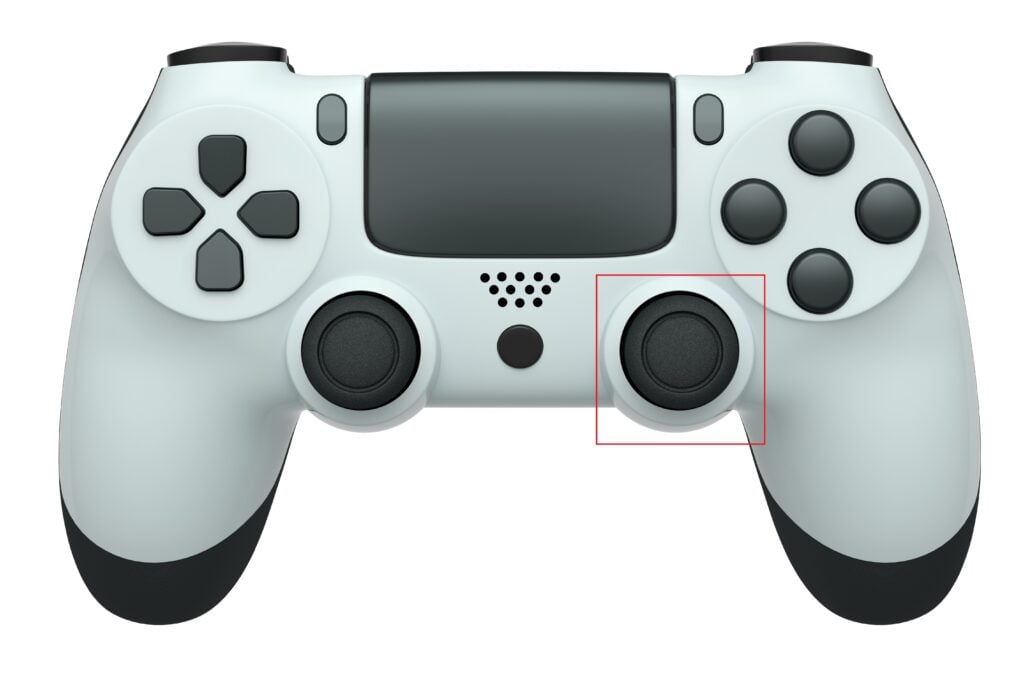PS5 Controller: Where Is The R3 Button?
Lost in the sprawling landscape of your PS5 controller? Wondering where that elusive R3 button hides? It's not a separate button at all, but a secret function built into the right analog stick itself. This ingenious design element opens a world of in-game possibilities, from sprinting and crouching to unleashing devastating melee attacks.
The PlayStation 5's DualSense controller, a marvel of haptic feedback and adaptive triggers, often leaves new users puzzled by the seemingly missing L3 and R3 buttons. This isn't an oversight, but a deliberate design choice. By integrating these functions into the analog sticks themselves, Sony frees up valuable space on the controller's face, allowing for a more streamlined and intuitive layout. This integration enables more complex control schemes, contributing to the richer, more immersive gaming experiences the PS5 is known for. Understanding the location and function of these crucial controls is paramount to mastering any game. From subtle movements to game-changing actions, the L3 and R3 buttons are your gateway to unlocking the full potential of the DualSense controller.
| Feature | Description |
| R3 Button | Clicking down on the Right Analog Stick |
| L3 Button | Clicking down on the Left Analog Stick |
| Typical Functions | Sprinting, crouching, melee attacks, special abilities, camera controls |
| Location | Integrated into the respective analog sticks |
| Controller | PlayStation 5 DualSense Controller |
| Reference | PlayStation 5 DualSense Controller Support |
The right analog stick, often overlooked as simply a directional input, transforms into the R3 button with a firm press. This click-down functionality provides an additional layer of control, seamlessly integrating advanced actions into gameplay. The tactile feedback, a gentle click confirming the button press, ensures precise execution even in the heat of battle. While the function of R3 varies from game to game, its consistent location on the right analog stick provides a familiar touchstone across different titles.
The L3 button, mirroring its counterpart on the left analog stick, operates similarly. A decisive click downwards activates this often-essential control. Frequently assigned to sprinting or other context-sensitive actions, L3 adds another dimension to player movement and interaction. Mastering the combined use of both analog sticks as both directional inputs and clickable buttons is key to achieving a higher level of gameplay finesse.
Consider the popular action-adventure game, "Horizon Forbidden West." Here, clicking R3 allows Aloy to focus her senses, highlighting points of interest and trackable clues. This functionality is crucial for navigating the game's vast open world and uncovering its many secrets. In a fast-paced shooter like "Call of Duty: Modern Warfare II," R3 often triggers a tactical sprint, providing a burst of speed for crucial maneuvers. The versatility of R3 is further demonstrated in games like "Grand Theft Auto V," where it enables players to control the in-game camera, offering dynamic perspectives and enhancing the overall driving experience.
The R3 button isn't just a button; it's a versatile tool that enhances gameplay in countless ways. From stealthy crouching to context-sensitive interactions, the function of R3 dynamically adapts to the demands of each game. Its seamless integration into the right analog stick underscores the DualSense controller's thoughtful design, placing a wealth of control at the player's fingertips. By understanding and utilizing the R3 button effectively, players can truly immerse themselves in their gaming experience and unlock a new level of interactive potential.
The placement of the R1 and R2 buttons, located on the upper right shoulder of the controller, complements the R3 functionality. R1, closer to the front, and the larger R2, positioned towards the back, offer additional input options for complex actions. This ergonomic layout allows for seamless transitions between movement, aiming, and executing special abilities, providing a fluid and responsive control scheme.
The left analog stick, mirroring its right-hand counterpart, houses the L3 button. This button, activated by pressing down on the left analog stick, typically controls sprinting or other context-sensitive actions. The synergistic relationship between the left and right analog sticks and their integrated buttons provides players with a comprehensive control system that seamlessly blends movement, aiming, and special abilities.
This innovative design philosophy behind the DualSense controller, incorporating the L3 and R3 functions into the analog sticks, streamlines the controller layout and expands its capabilities. By understanding the placement and diverse functionalities of these hidden buttons, players can fully appreciate the nuanced control and immersive experience offered by the PlayStation 5.
While the function of R3 varies across different games, the core principle remains constant: a firm press down on the right analog stick activates it. This consistent location allows players to quickly adapt to different control schemes, enhancing the overall gaming experience. The tactile click provides confirmation of activation, ensuring precise control and preventing accidental presses. This seamless integration of functionality highlights the DualSense's design ingenuity, placing an impressive range of control within easy reach.
Whether you're exploring vast open worlds, engaging in intense firefights, or navigating intricate menus, the R3 button plays a crucial role in maximizing your gameplay potential. Mastering this often-overlooked control opens up a world of possibilities, allowing for more nuanced interactions and a deeper level of immersion in the virtual world.


